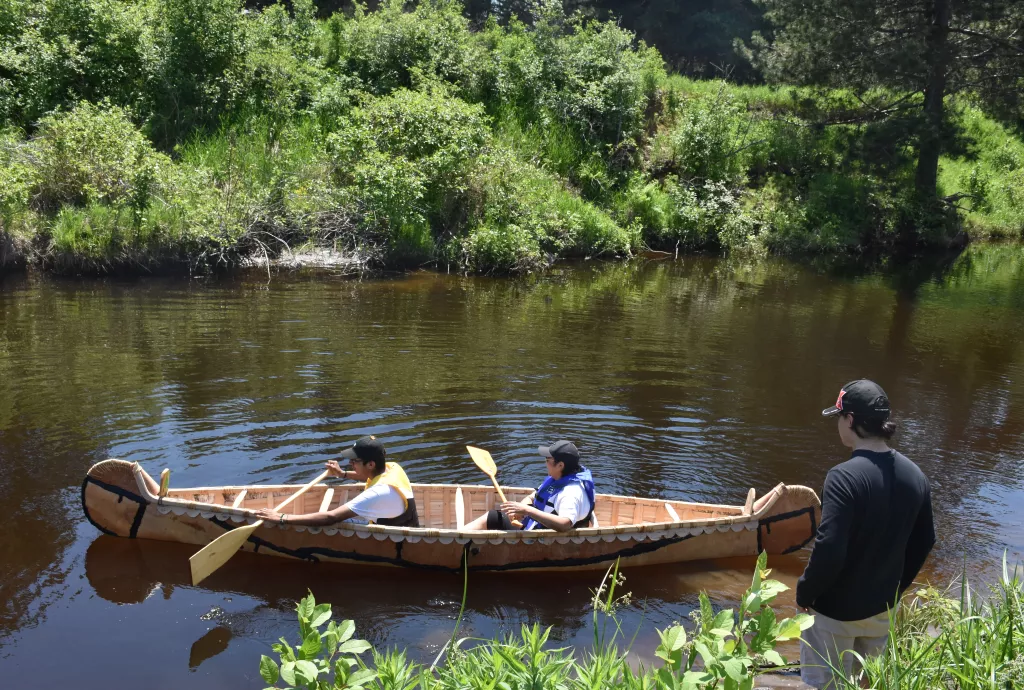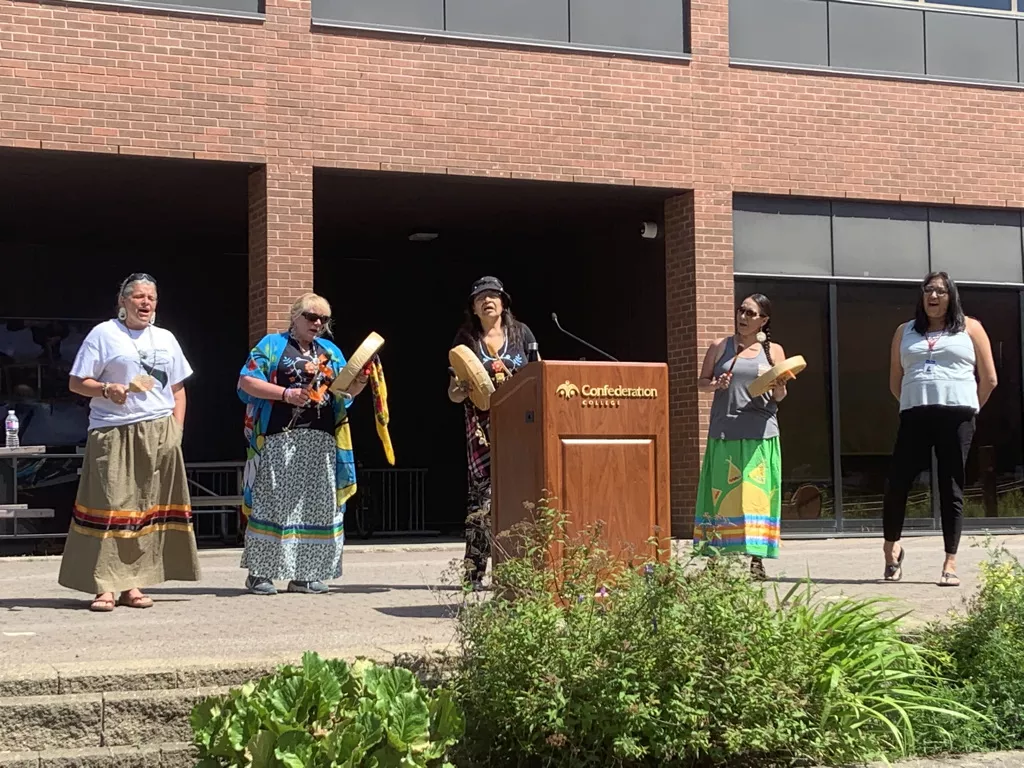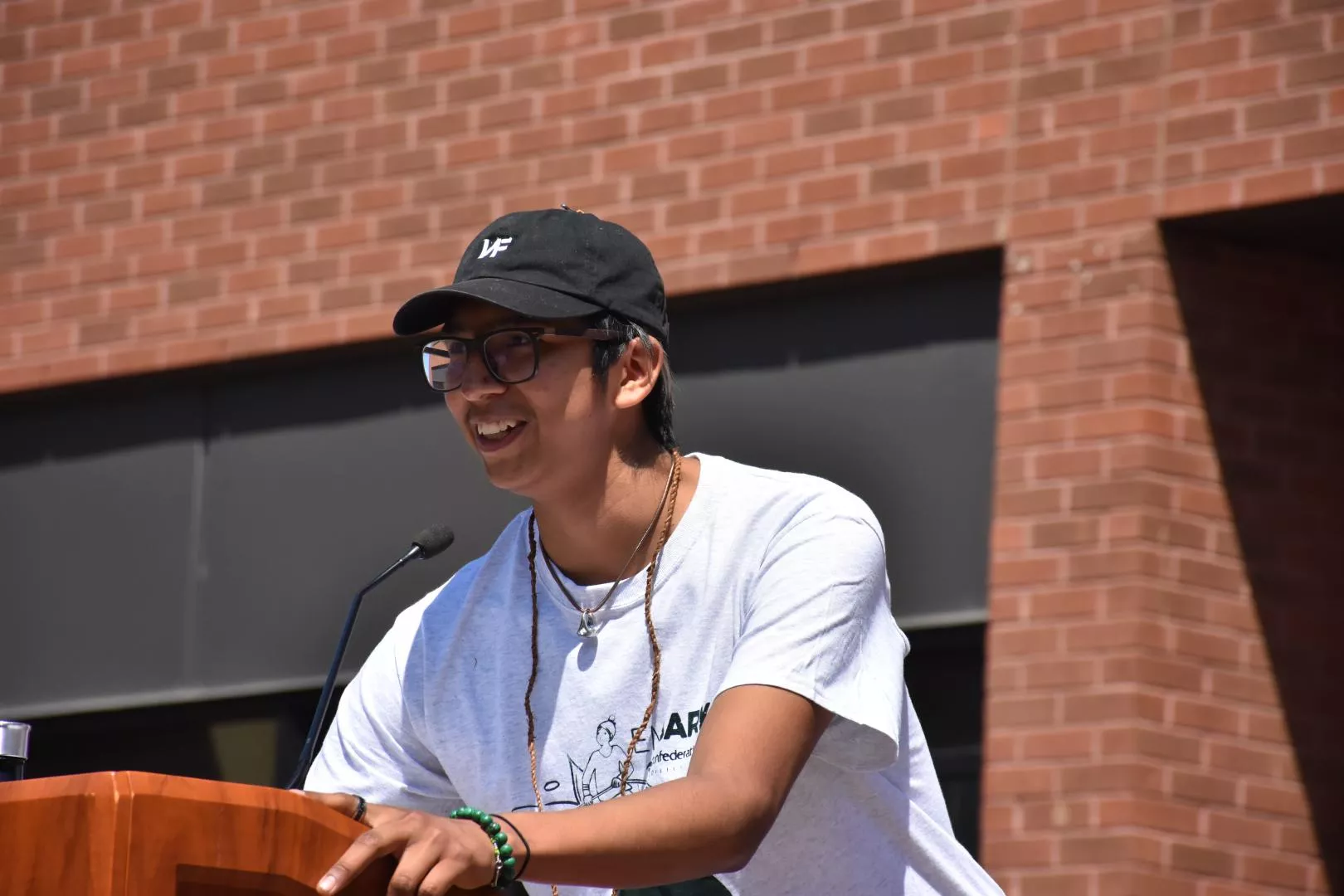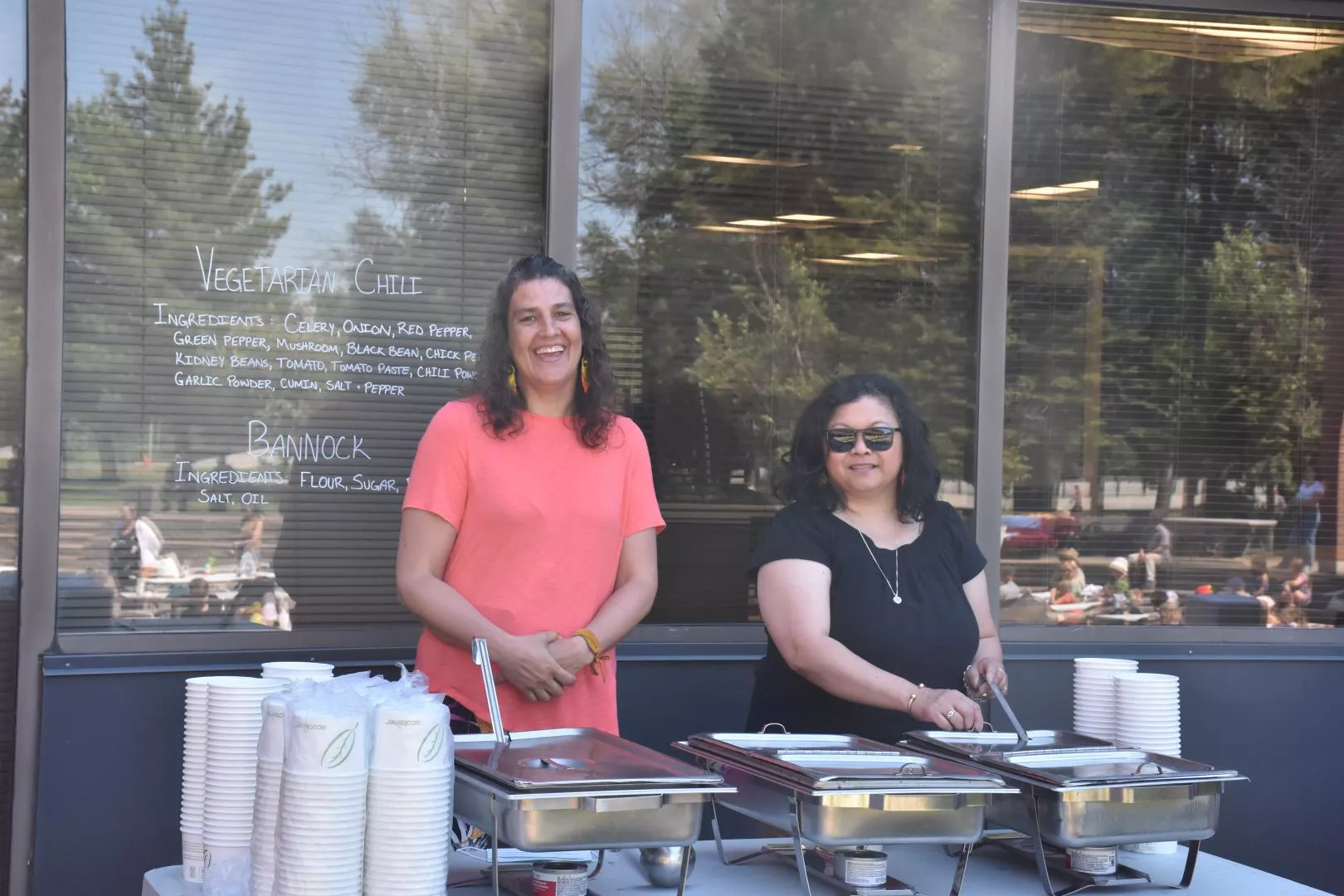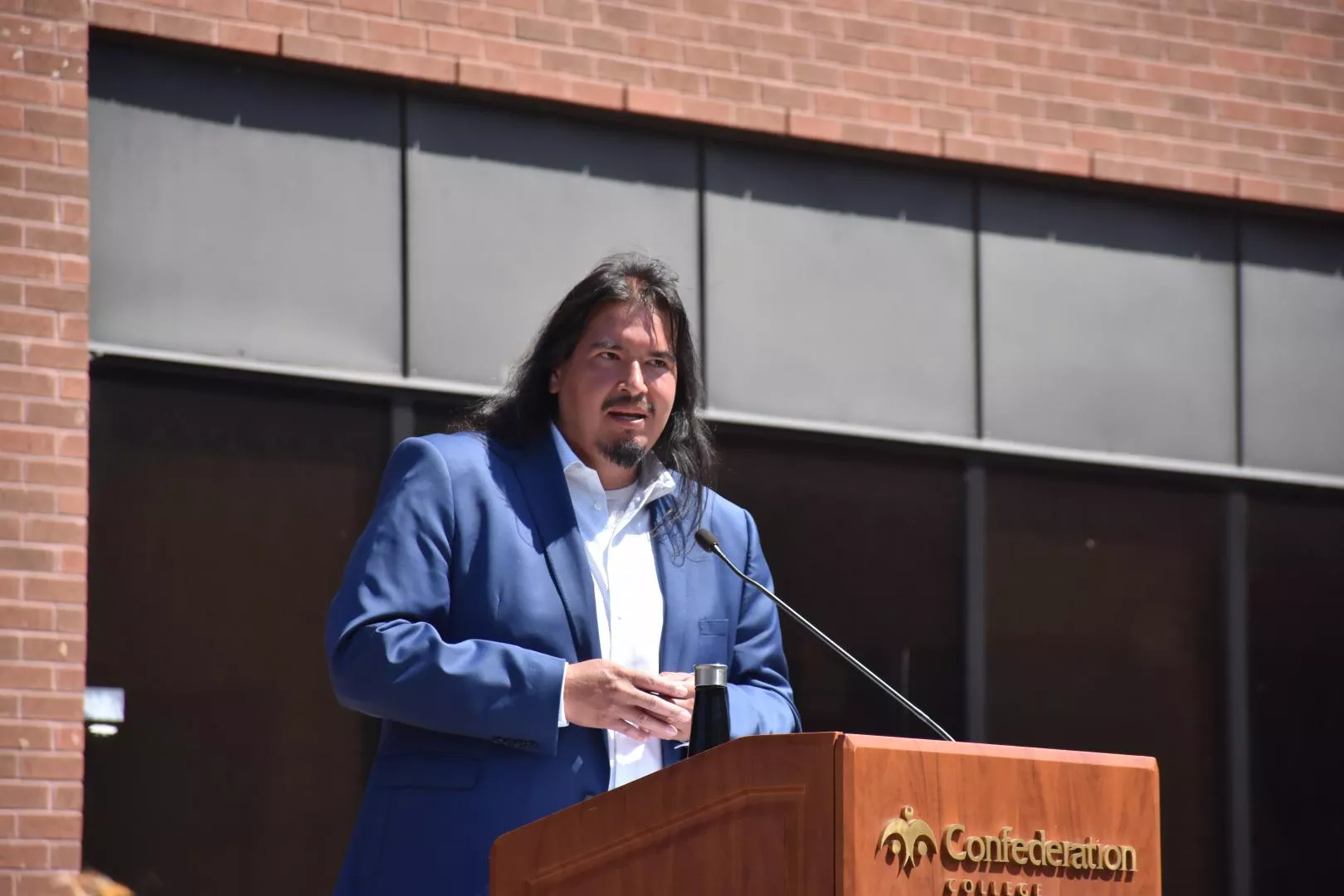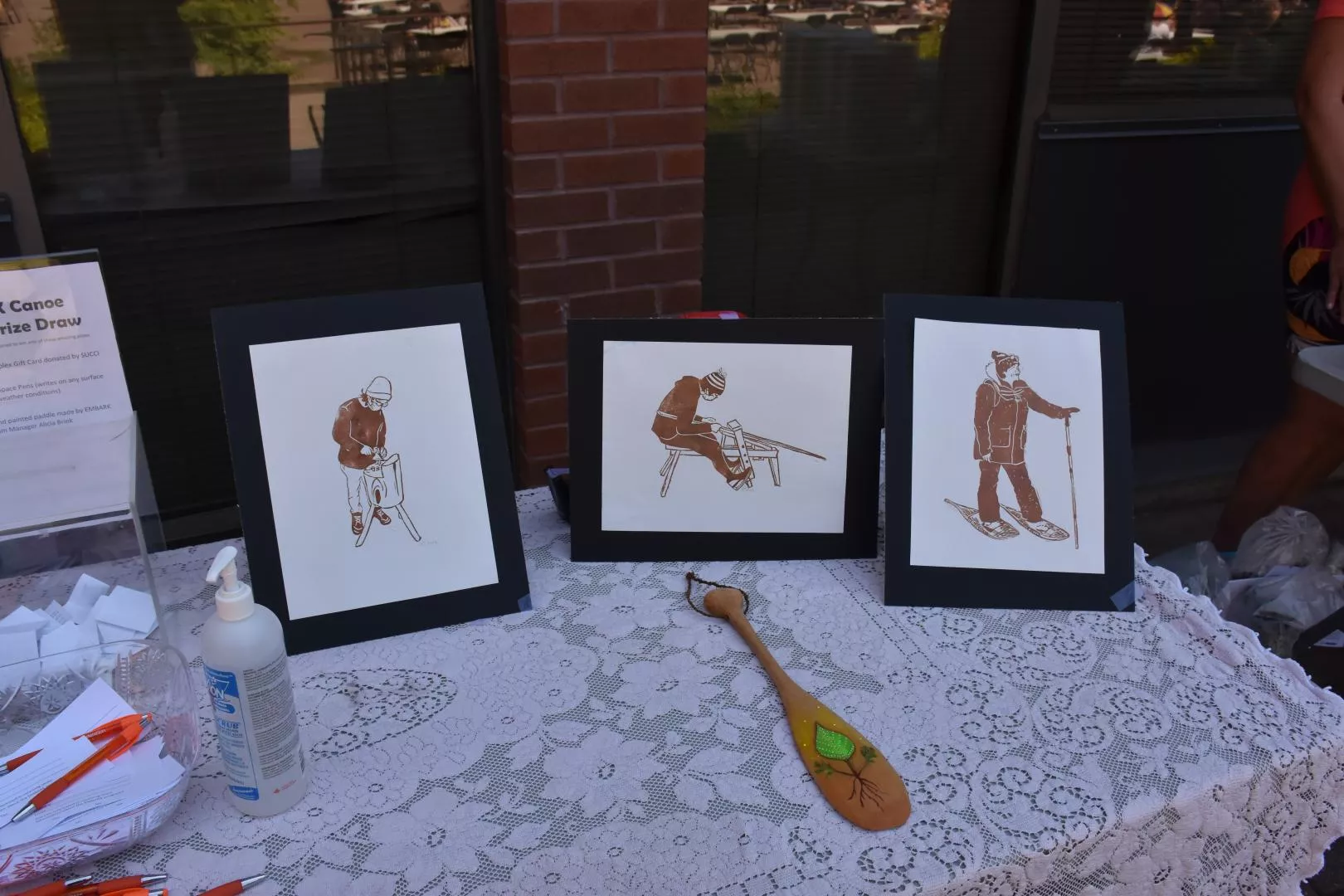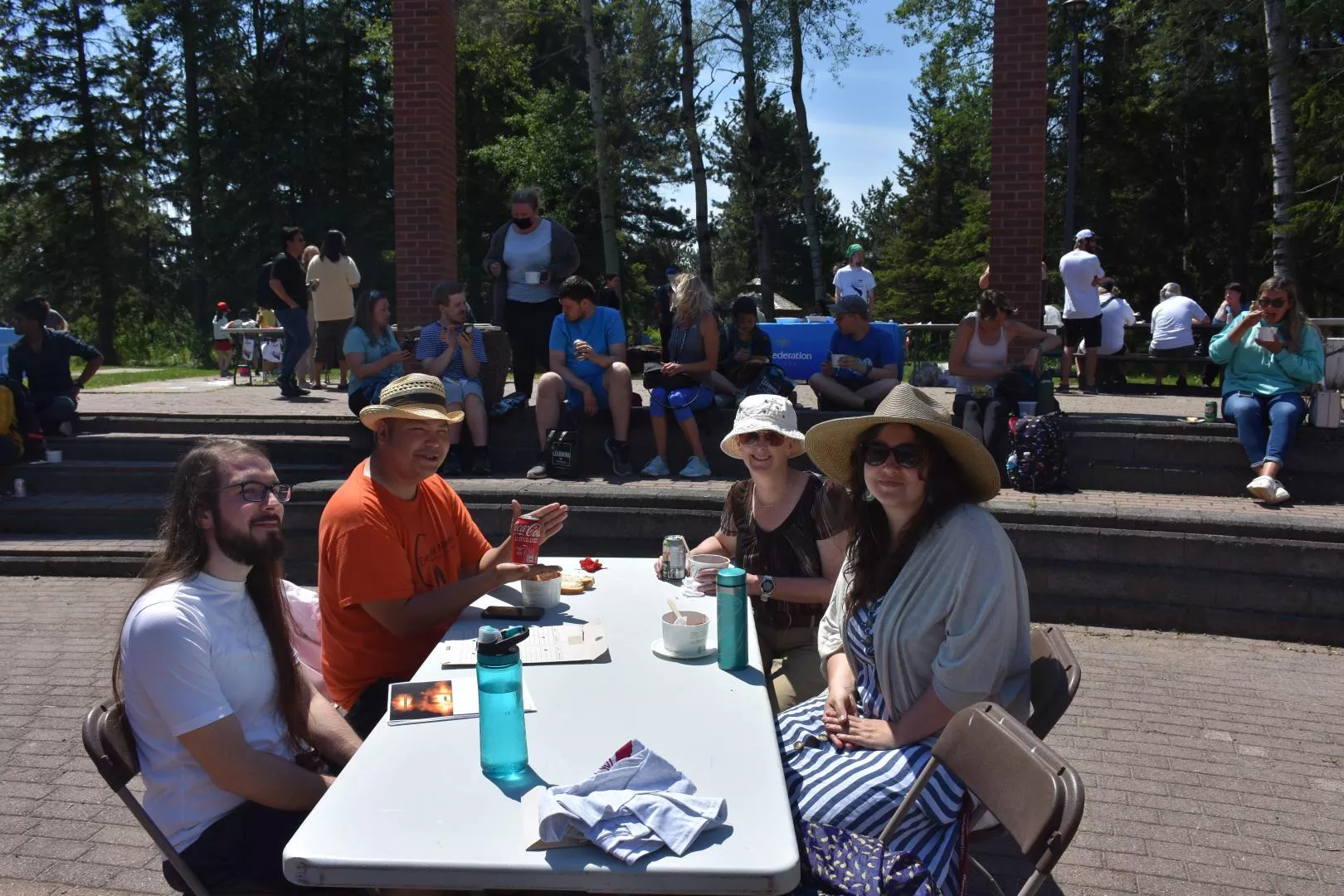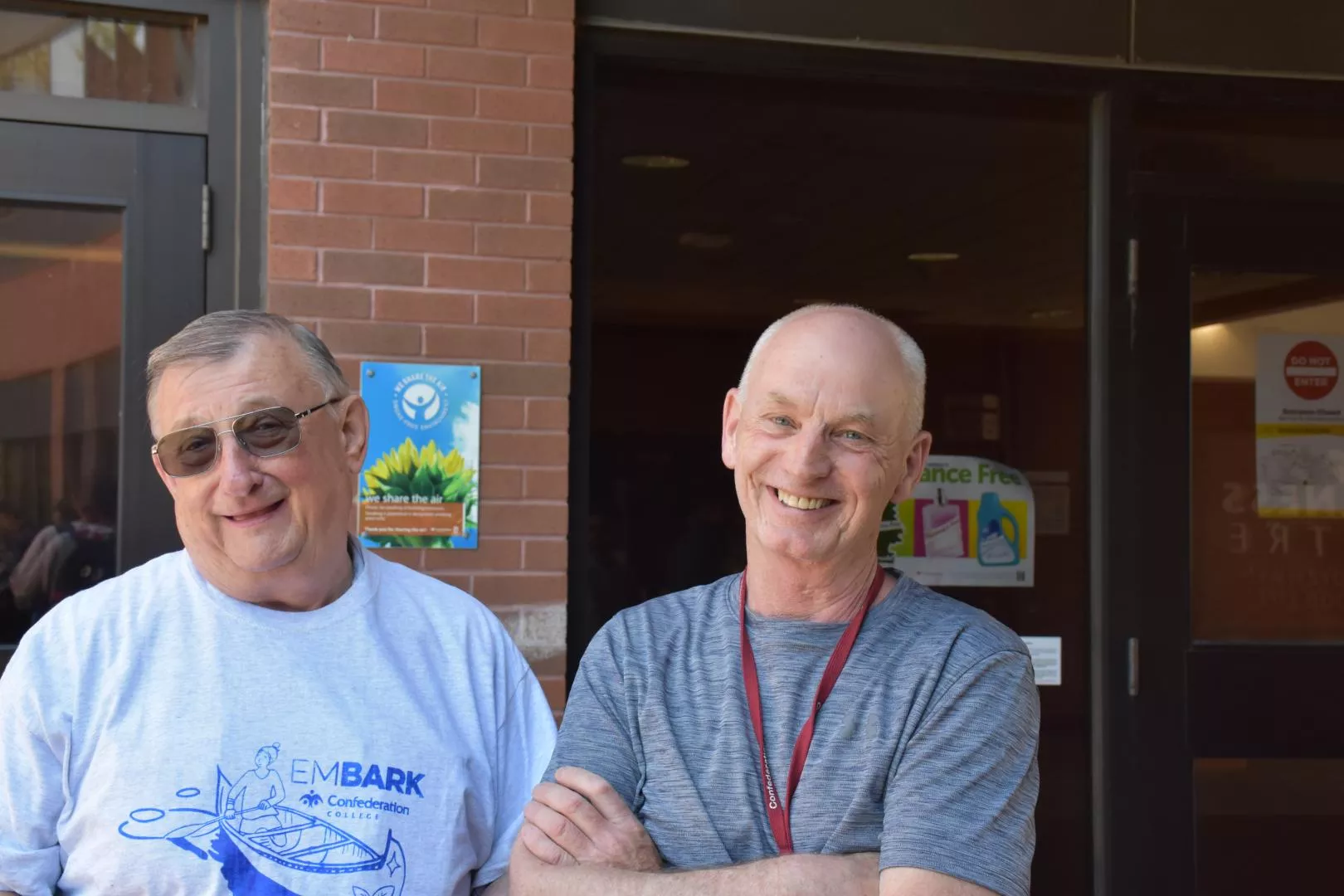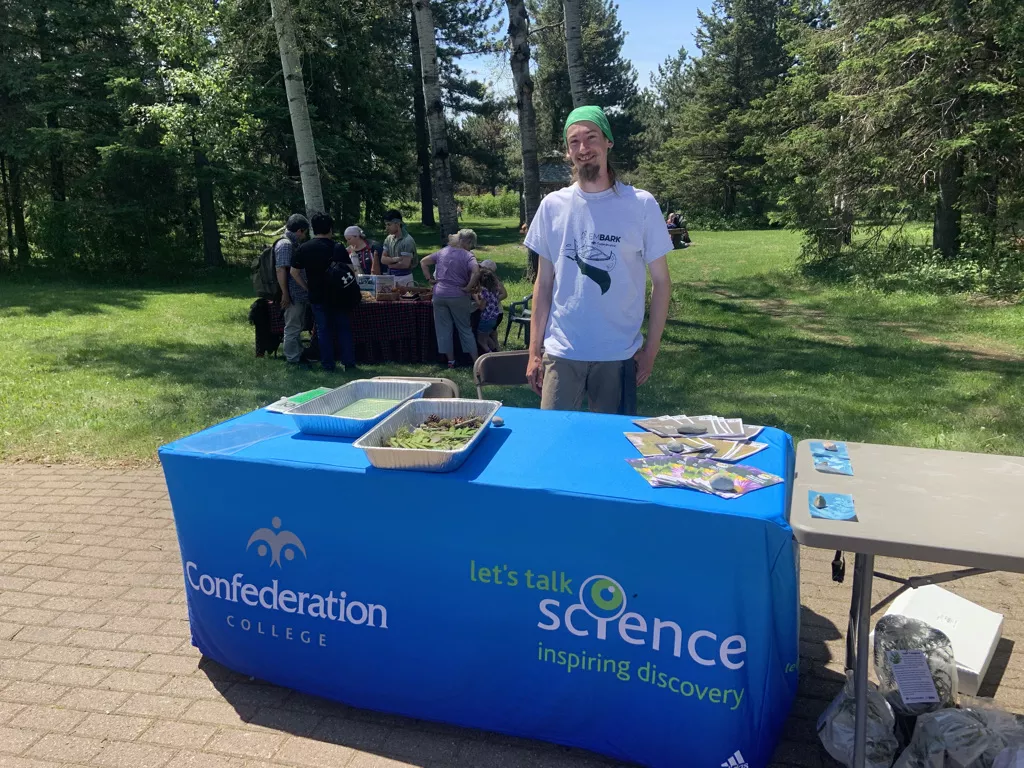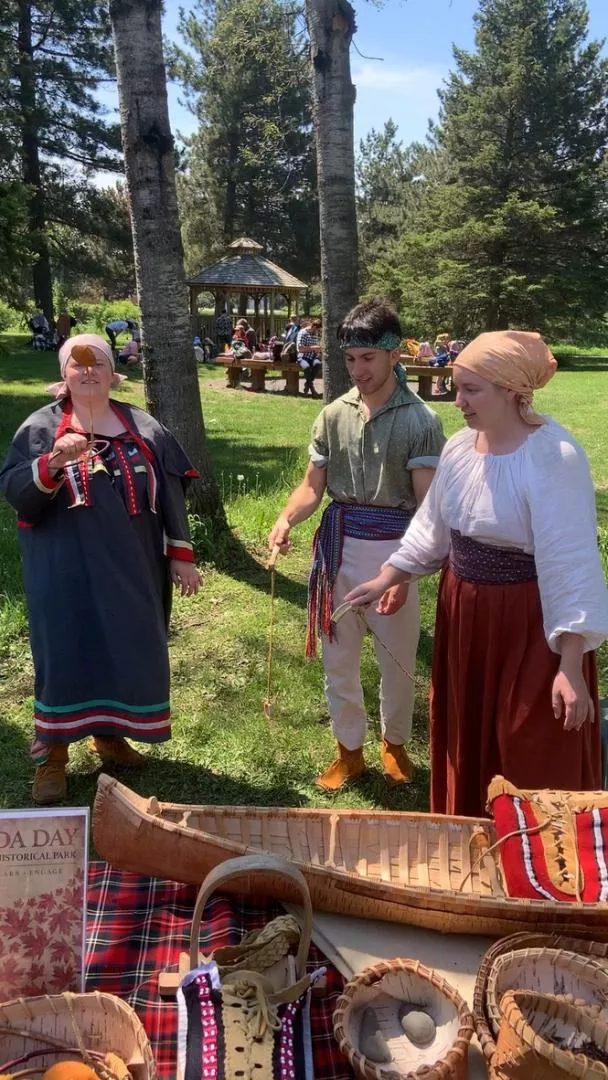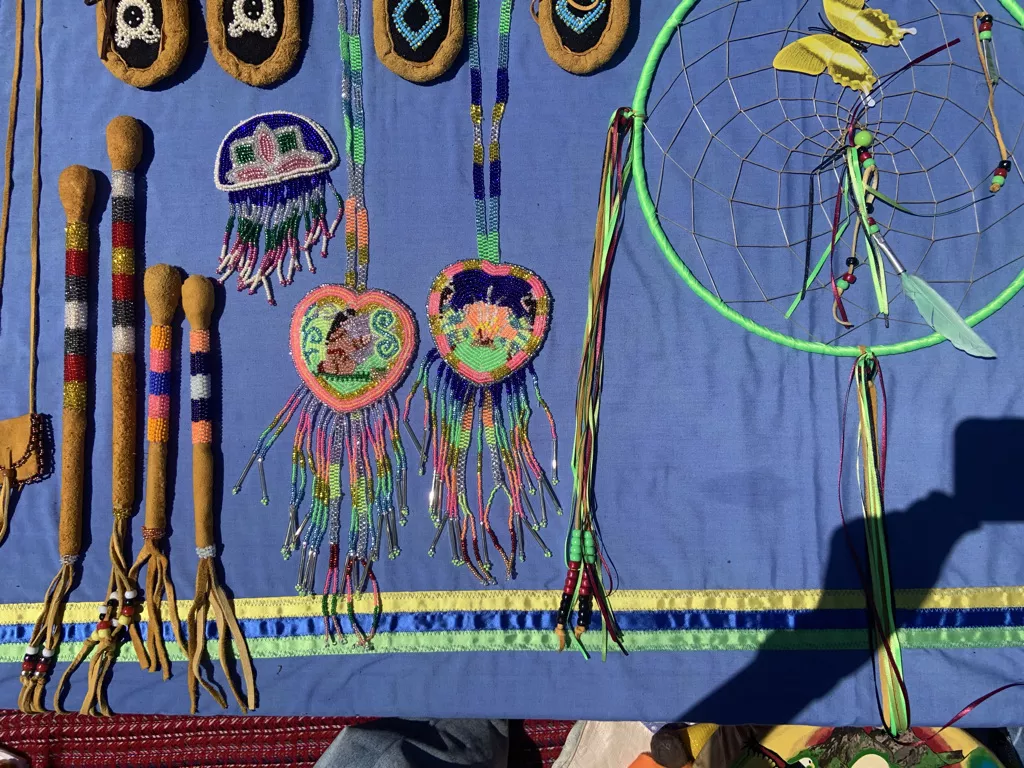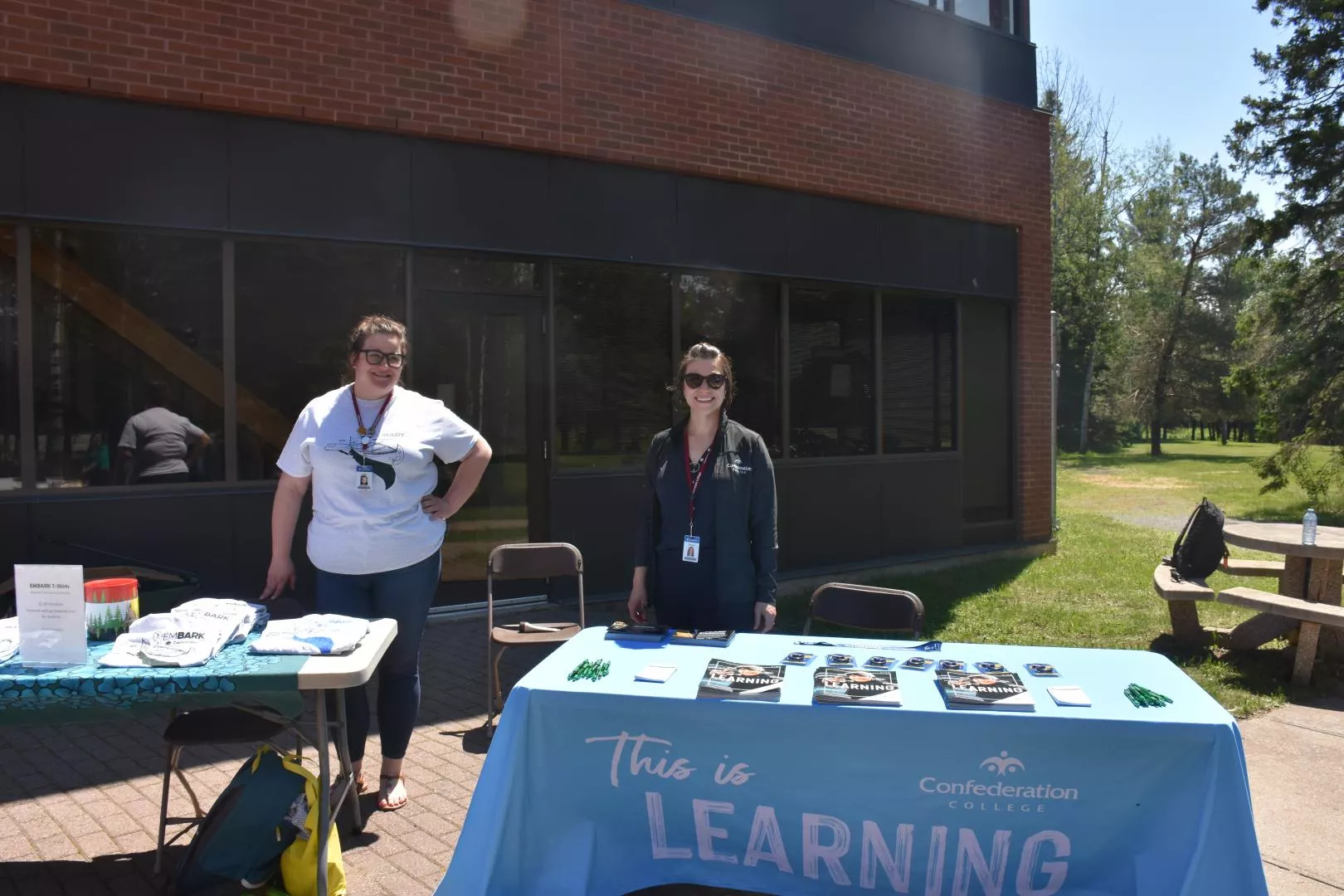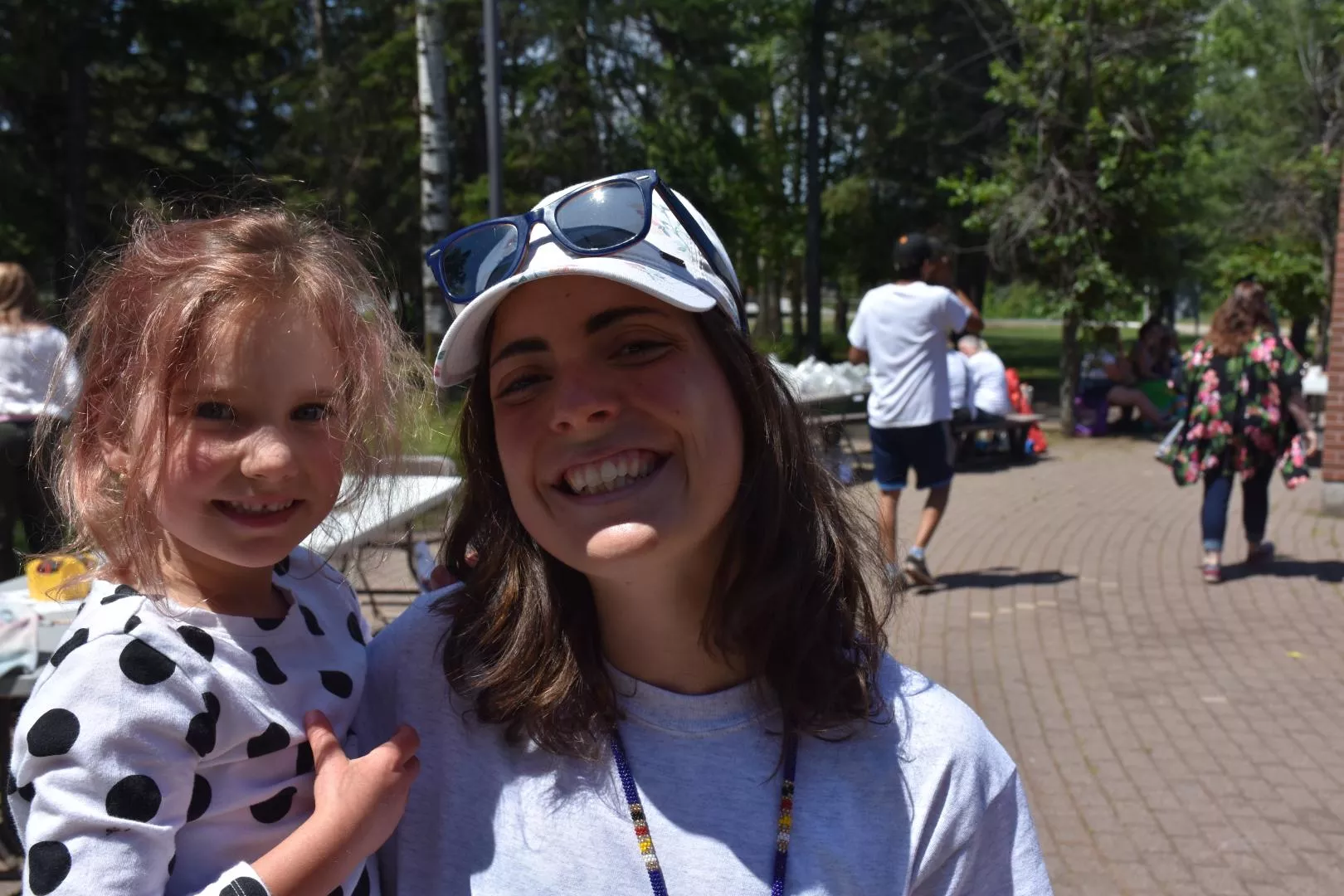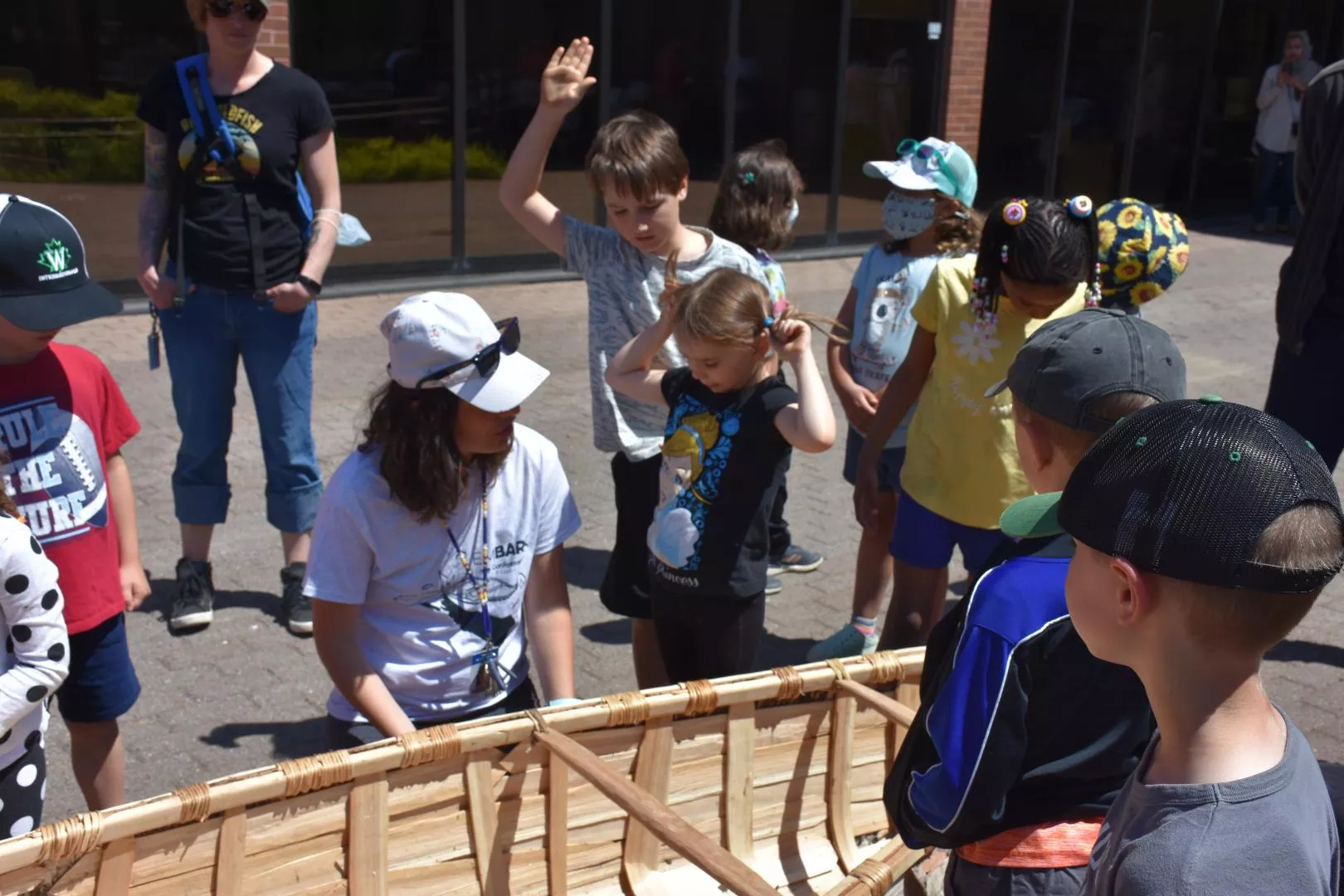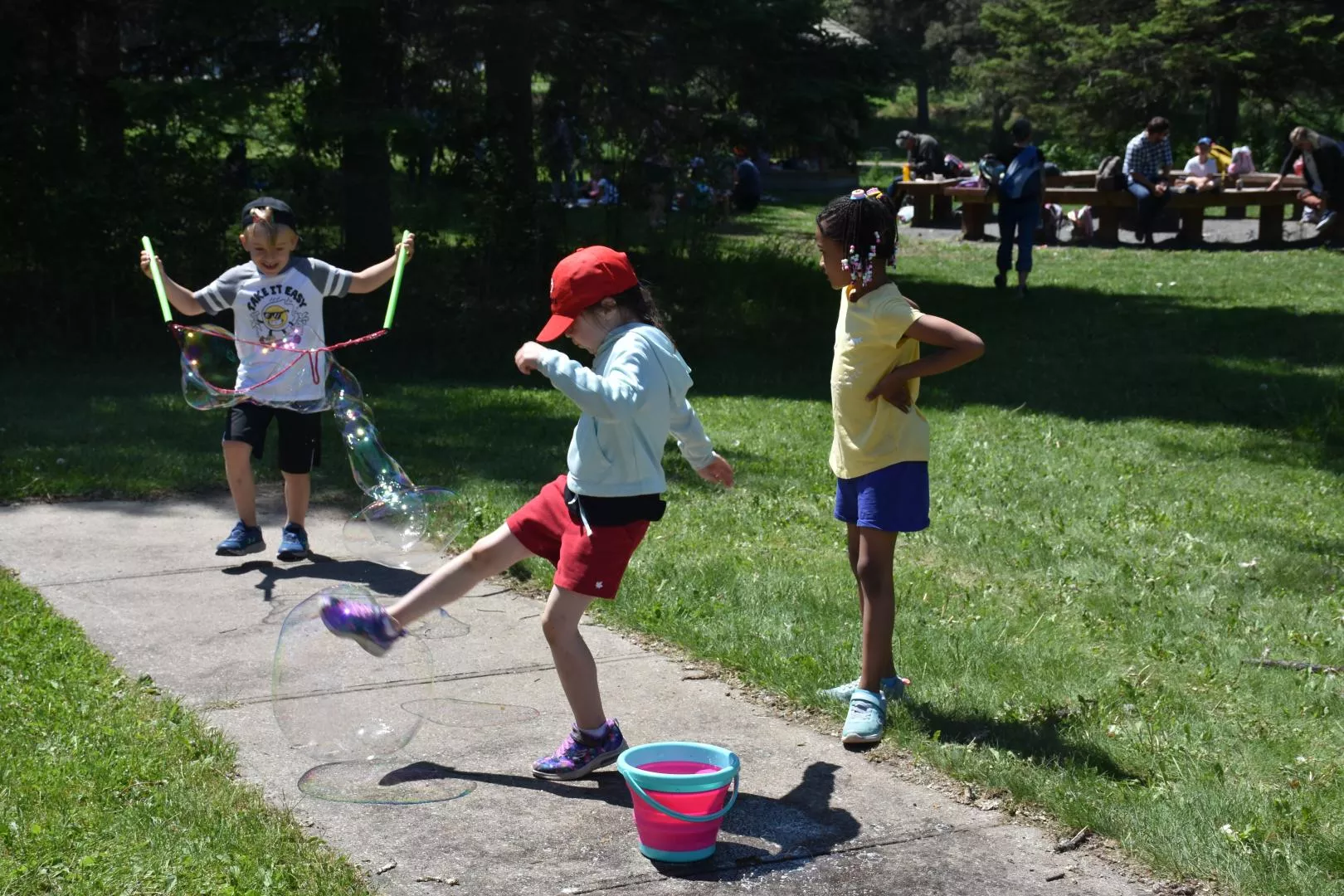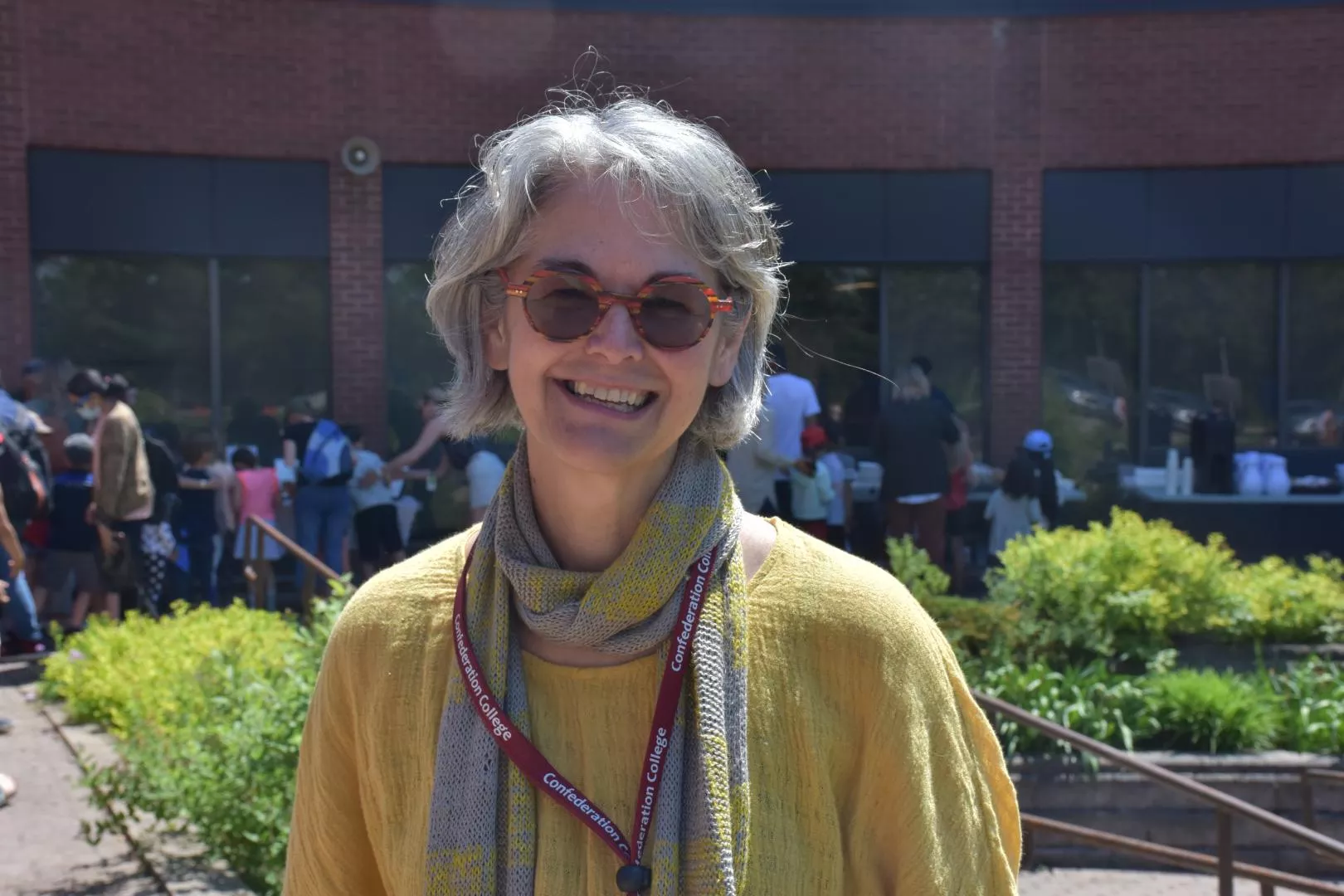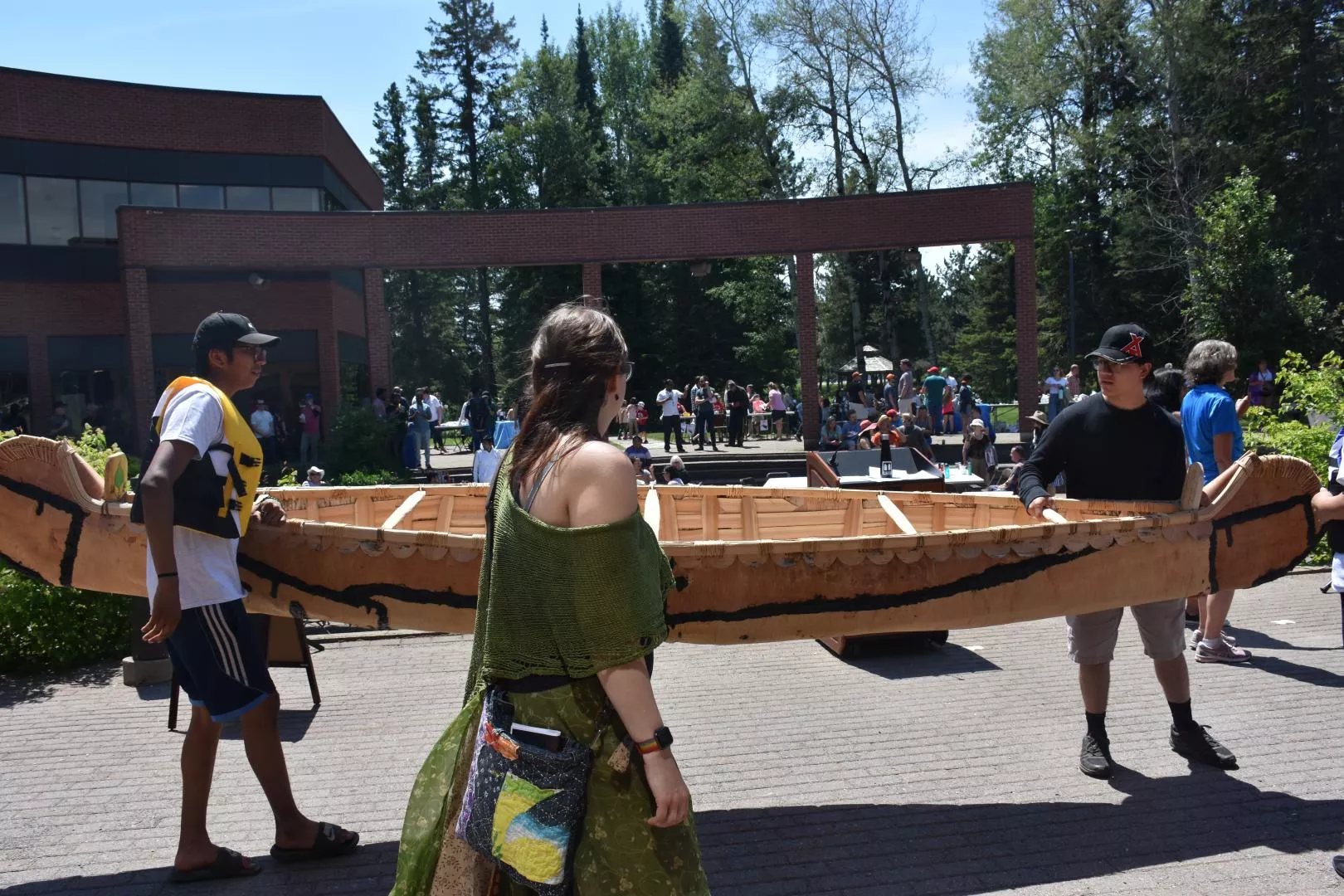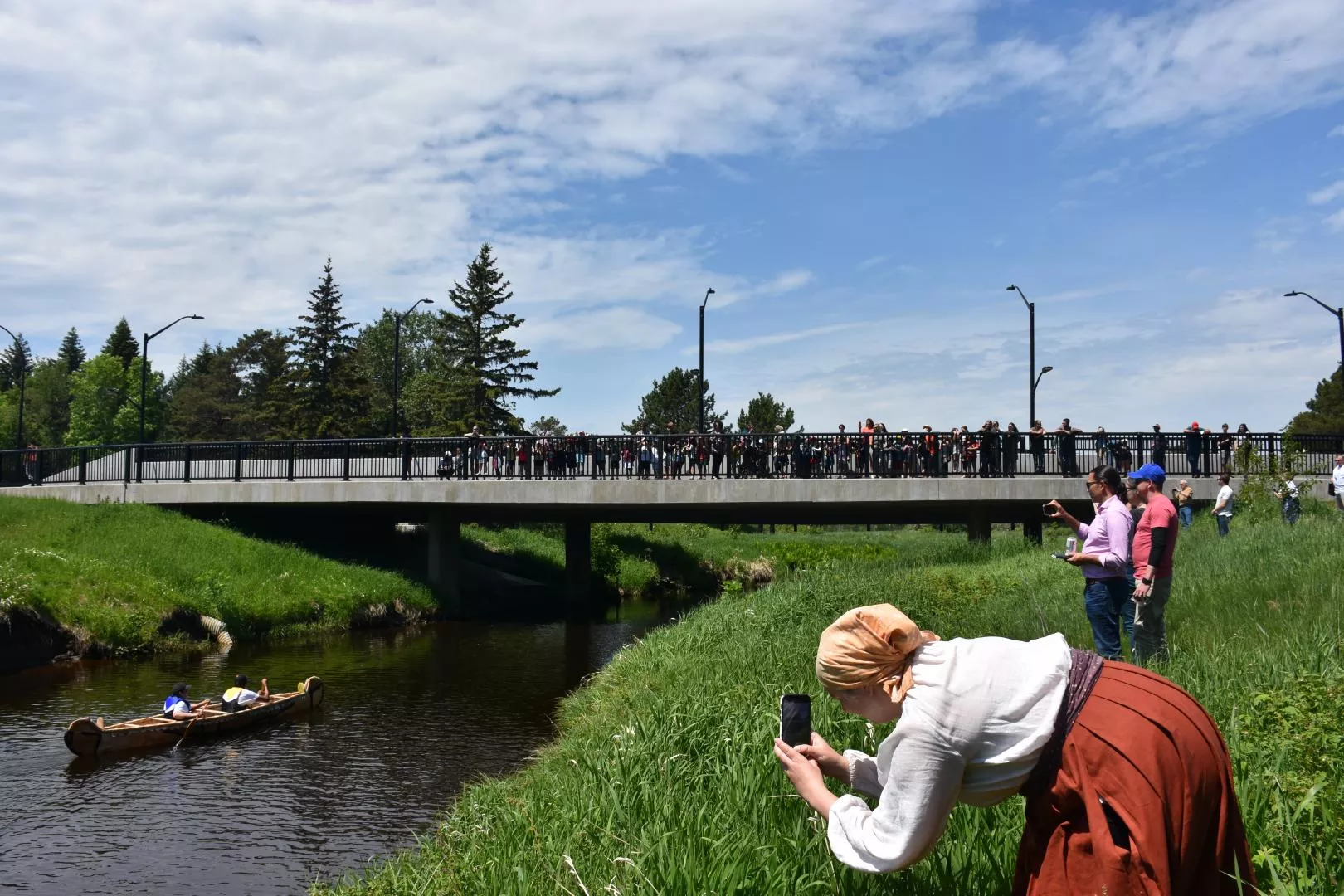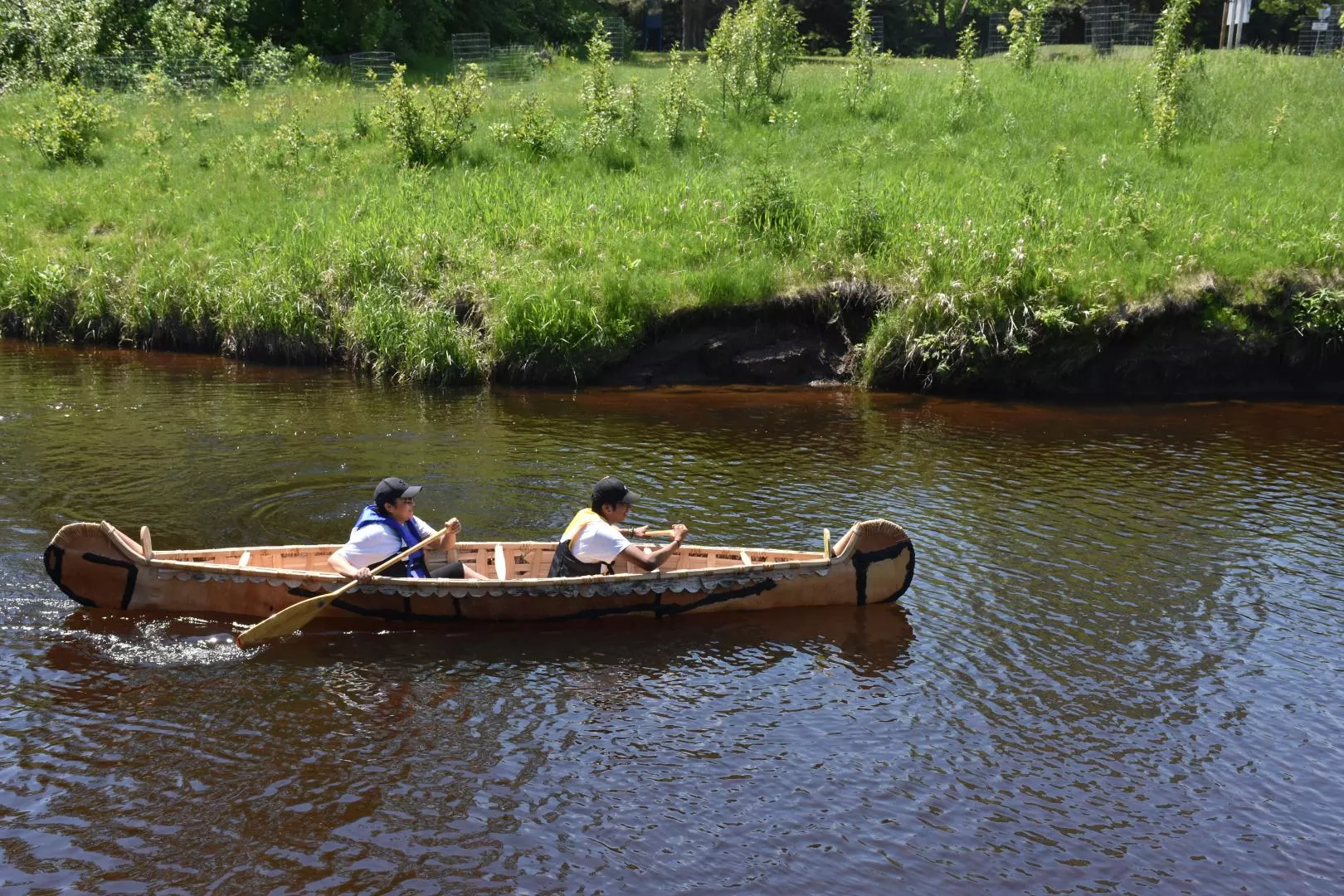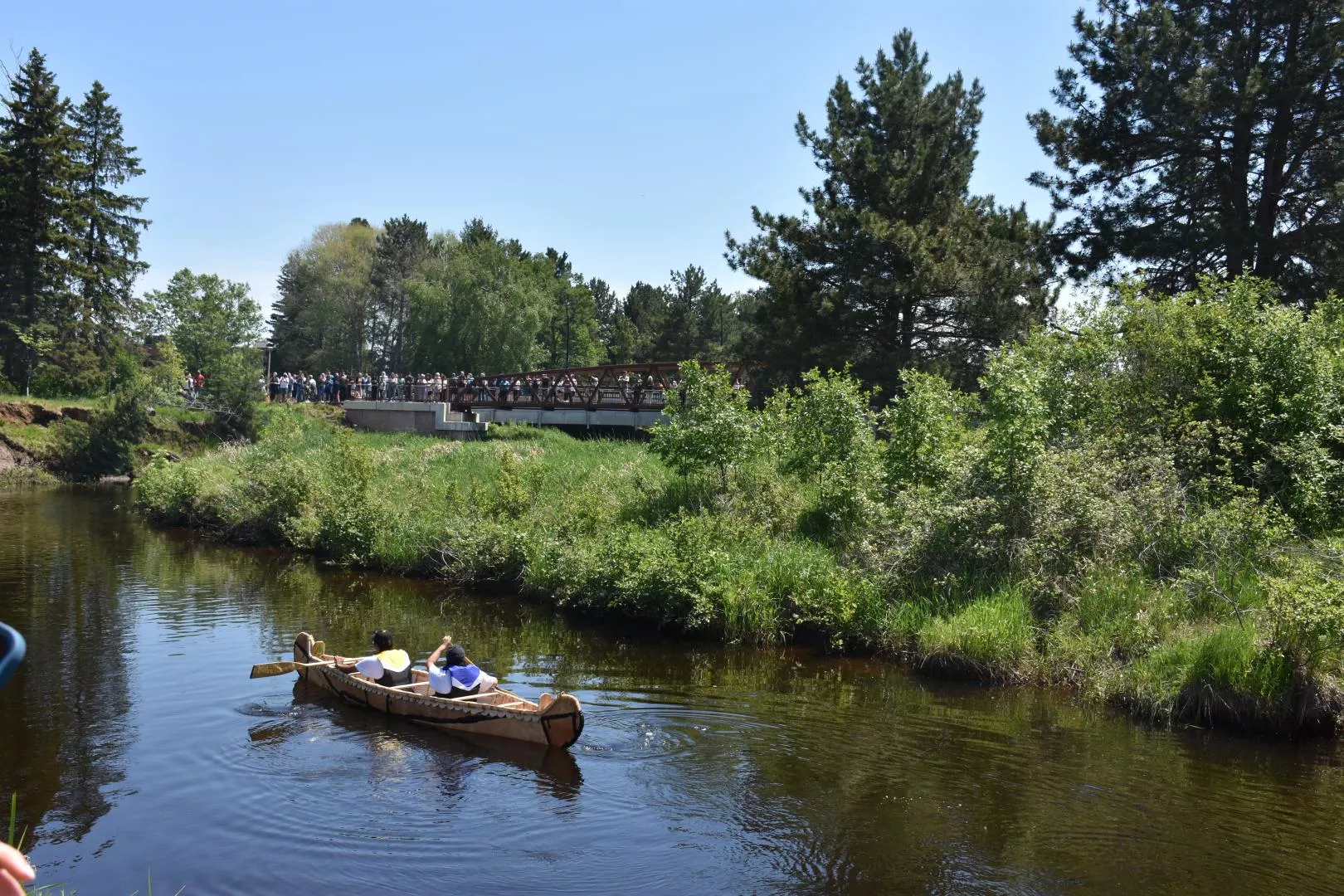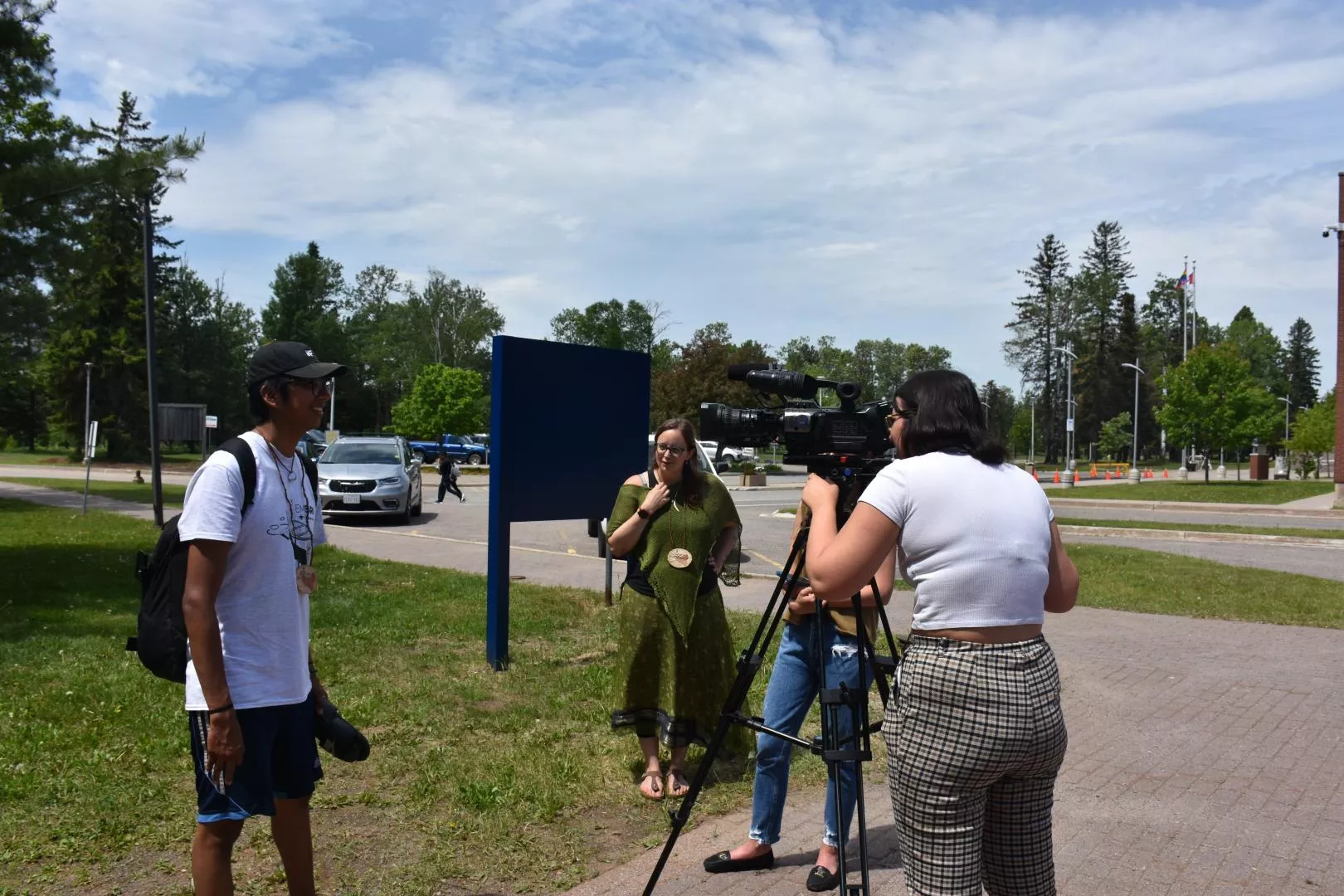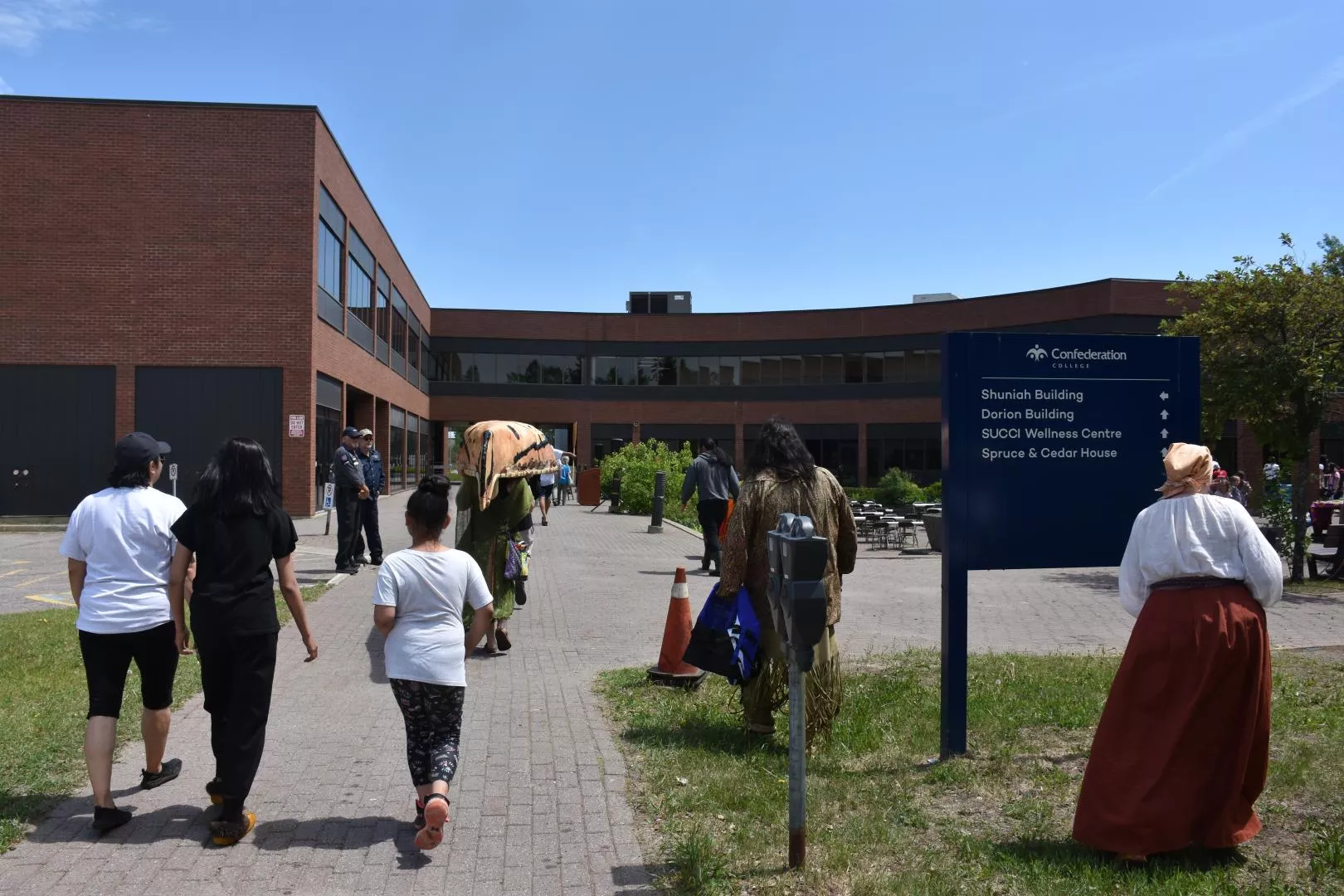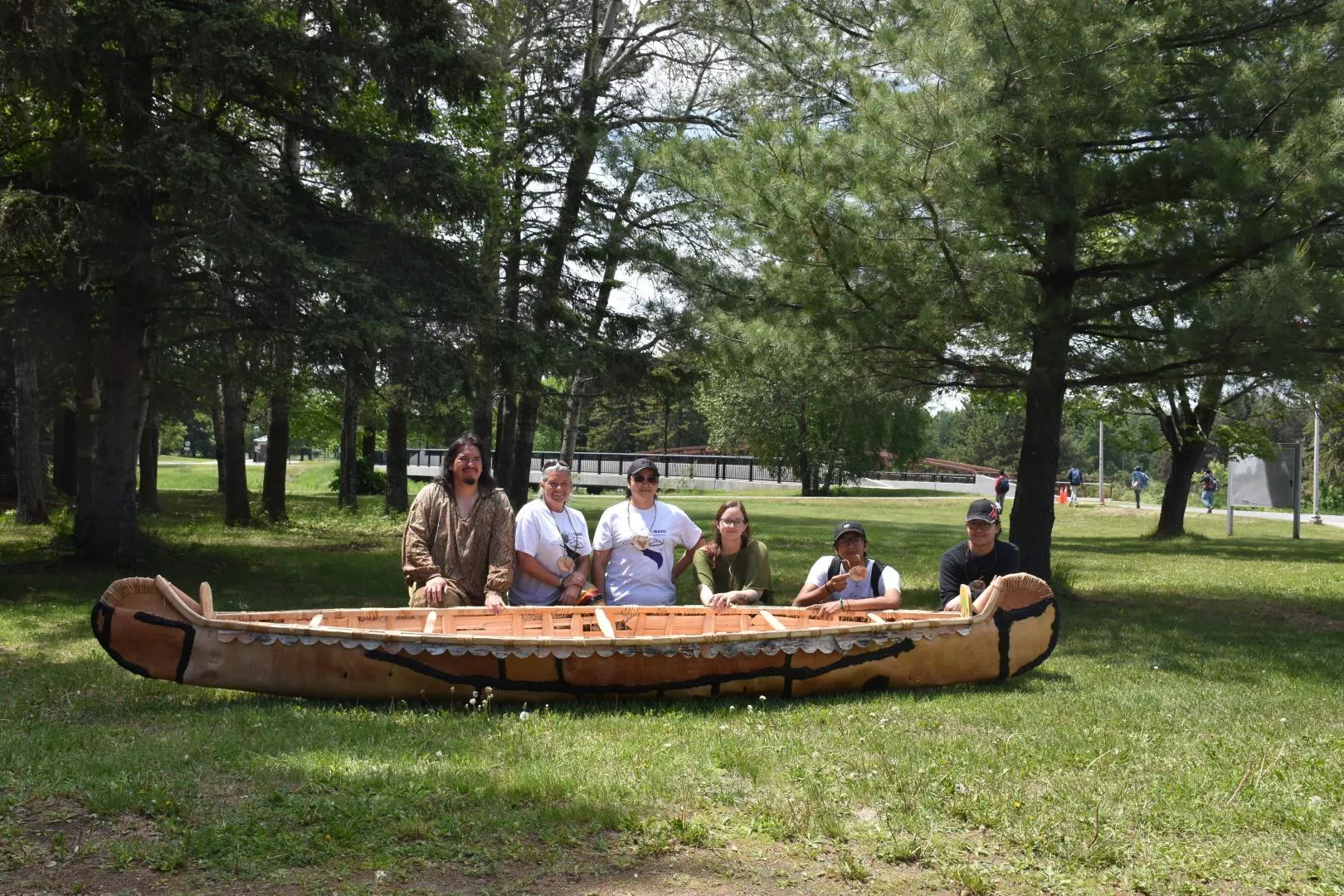Canoe Launch and Feast
Posted:
Campus:
In a canoe made of birch bark, cedar, and sewn together with watap (spruce root), students in the Embark program paddled down the Macintyre River. Onlookers watched from the bridge. The river and the land looked ancient and full of Indigenous story. Our teachers, the Ancestors the trees, water, animals, community, all present. It was midsummer and we feasted the canoe, the students, the community, boreal forest, and the water.
Linda Nasekapow, a member of the Thunder Bay Hand drummers, said with exuberance, “the drums were dancing.” You could feel them vibrating on the bridge, as they sang the River Song, a song that changes tempo with the water. As the canoe and the students turned the bend in the river, you could hear the cheers from people on the bridge. You could see the pride in their faces. It took a lot to get here.
A woman from Old Fort William stood on the riverbanks dressed in the period garbs of the 1800’s taking pictures with her iPhone. She captured the spirit of the event, in the same way we did standing on the bridge, brand new technology, and underneath us (always underneath us the land) the water and our ancestral memories.
We named the canoe, Wildflower, after the drum song that calls our children home from the forest where they played, it was also sung to let the children they could come out of hiding when the planes left for residential schools.
Elliot Cromarty, Indigenous Heritage Program Coordinator at Old Fort William spoke at the event about a conversation he had with Connor our canoe teacher, as they left the final canoe class. There is so much resilience in that room, he said and then they were silent as they felt the gravity of the truth. His words caught in his throat as he shared this, and he openly wept.
The students each came to the class carrying their bundles. They carried their lived experiences, skills, and the gifts that both challenged, and supporting them at different times. Mental health emergencies, family deaths, housing insecurity, problems with childcare and complex relationships to culture, and education sometimes made coming to college hard. But they each continued to come and to share their gifts.
Tyrell Moonias, Embark student and canoe builder – noted how much the canoe had taught him about mistakes and perfectionism. One morning we worked at steam bending the cedar ribs into the canoe, ribs that we had spent hours carving. We could each felt the disappointment reverberating through the room with the sound of each crack as rib after rib broke under the pressure of change. But Connor kept trying, and we tried different each tried different ways to support him; more boiling water, and thinning of the wood… more steaming. Like us, the canoe is not perfect, but organic. Tyrell noted that he still struggles with perfectionism, but the canoe still worked – it carried him down the river.
The students in the program each noted that they felt closer and more grounded in their culture. It was also clear that the large cooperative task of making a canoe a community. Something that many of us are lacking in our lives, but integral to Indigenous ways of life and for minowaadiziiwin (to leading a good life). It takes a community to build a canoe, and an ecosystem.
The students also studied the land according to western science. They learned how to test soils, map out tree species with aerial photos (GIS), and plant identification. They began to understand the land holistically.
Indigenous peoples long used the principles of STEM in their day-to-day life. This meant that design changed based on the intended purpose of the canoe, the amount of people it would carry. Builders had to make note of the temperature of the climate and the waters it would travel to change the chemical ratio of their spruce pitch to seal the seams. Birch bark had to be collected of the correct thickness, and different thickness of bark required a different sewing techniques.
But students did more than build a canoe, this preparatory certificate also allowed them to build up the math, technology, communication, and computer skills they would need to further their education. Nick Davis, Embark graduate and future Paramedic said that he learned how to love math in the program. In high school math was just something that he had to do, but Raquel’s fresh new take on Math taught him how to approach math as a puzzle, a solvable problem - fun.
Bringing this kind of large scale project to the college was not easy. There were many times that it felt like the brick walls of the establishment, designed to shelter us from the land and elements, held us away from the land we were trying to get back to. But at each impassible obstacle there was another person with a new idea, and an openness to try something new. The College reached up to help us.
Building this canoe filled the weeks with a reverence, for each other for nature and for the beauty of people working together.


